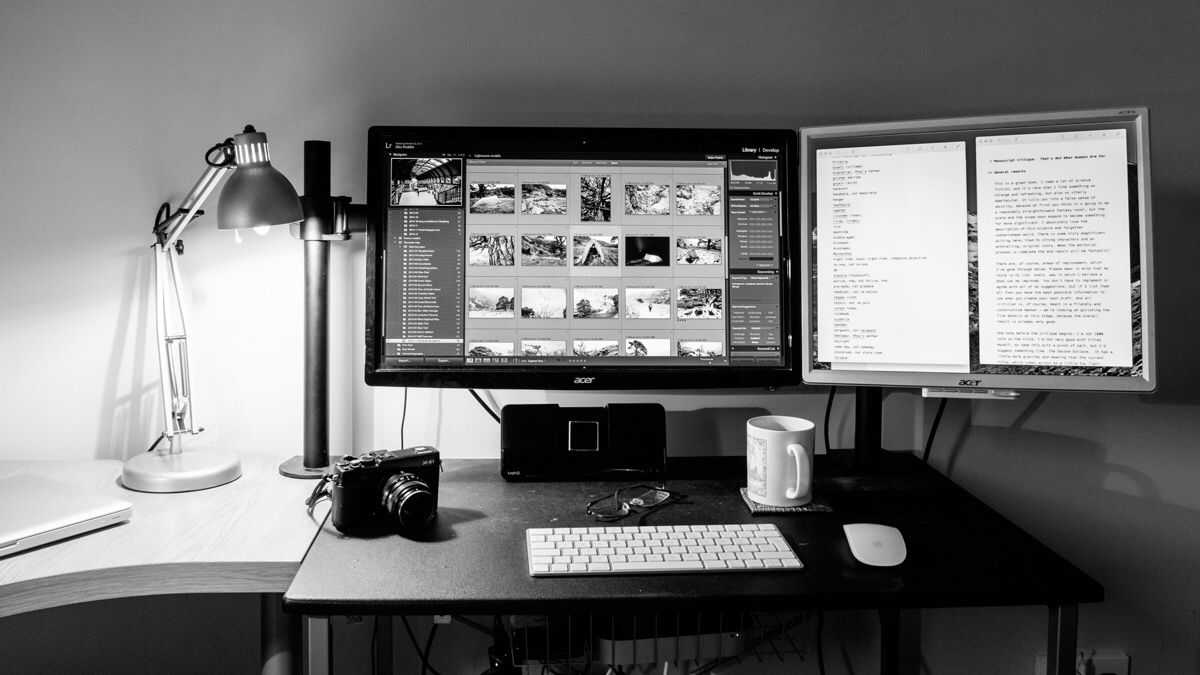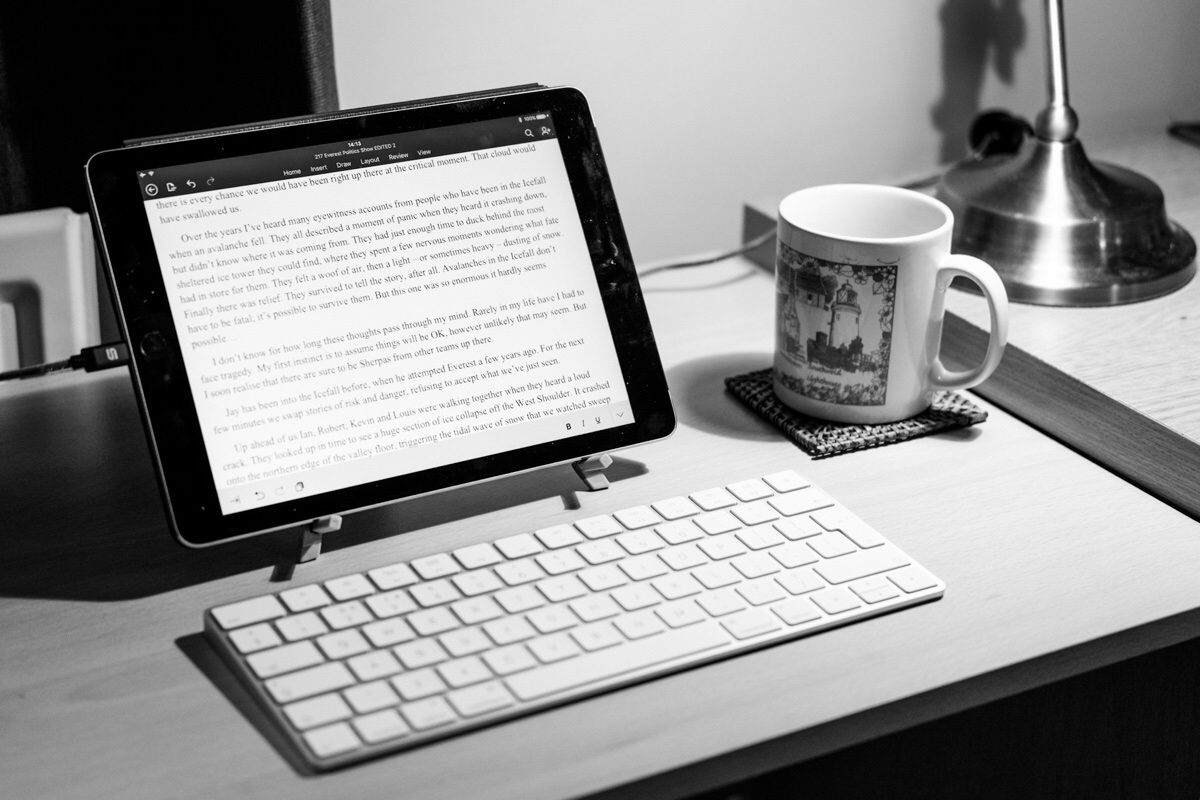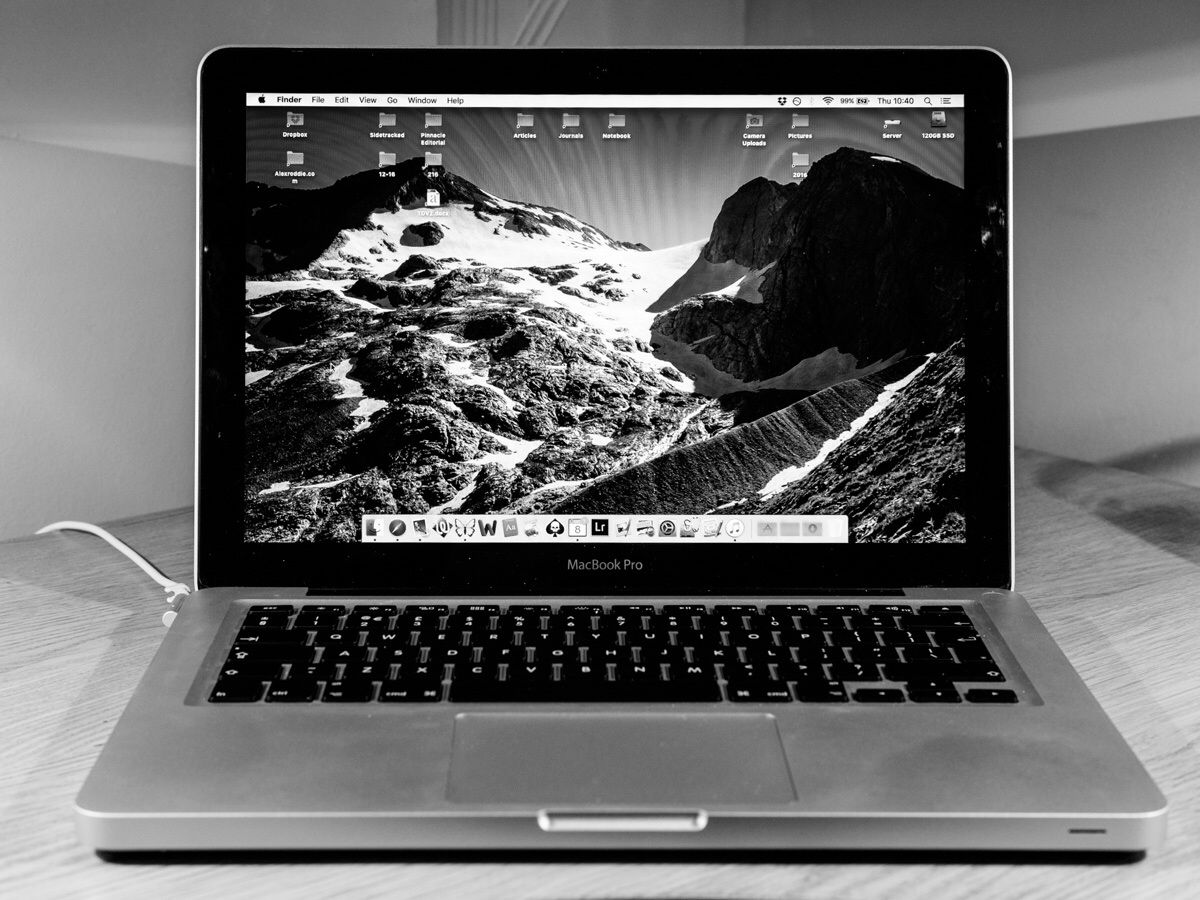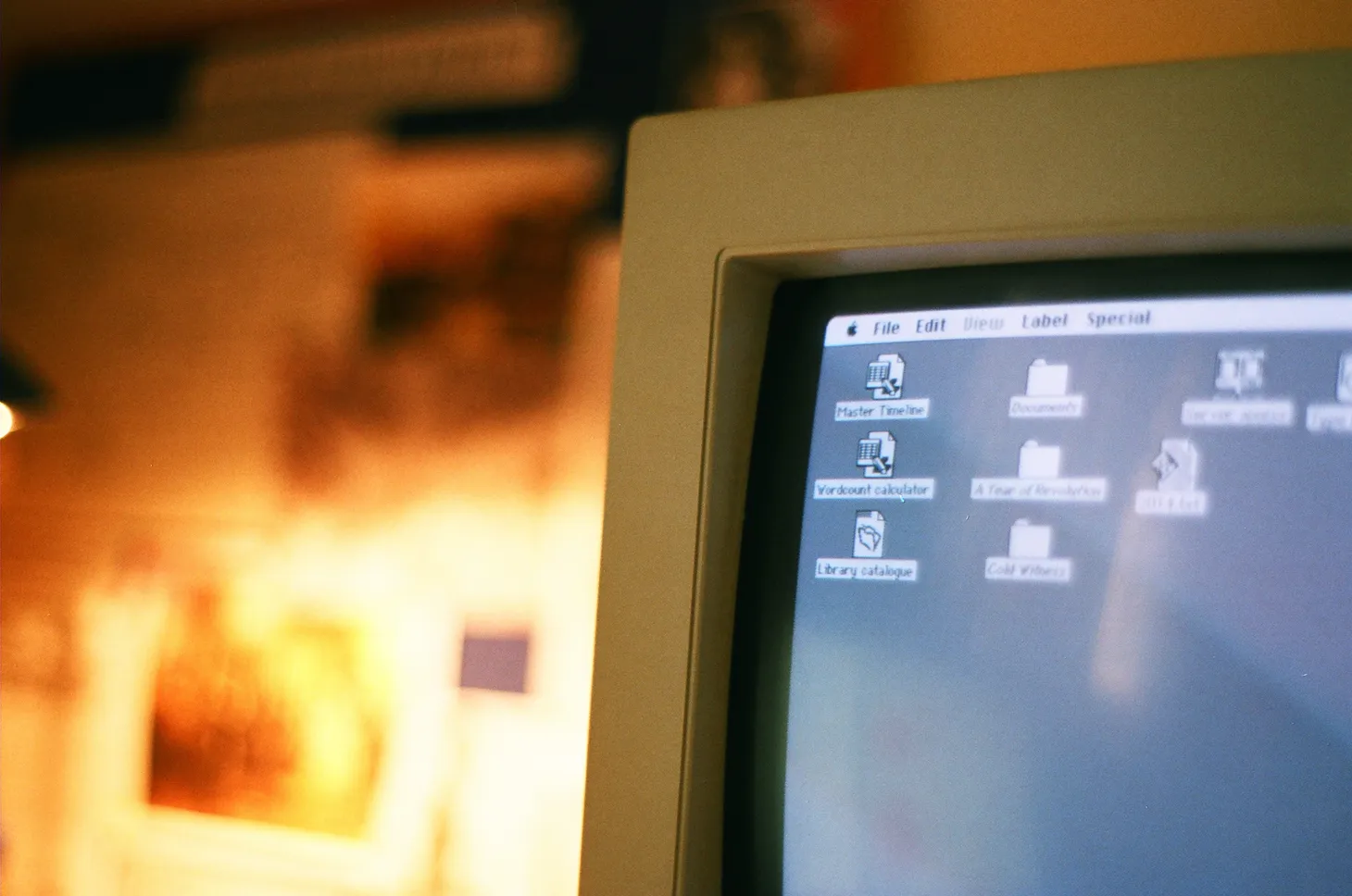The wrong side of history

For the first time in almost twenty years, the Mac platform is facing an existential threat. How we respond to this threat may shape the future of computing as we know it. The future isn’t bright – the future is compromised.
One of my earliest memories is of sitting in front of a Macintosh Classic in the library at Bourn Primary School, learning how to format and save a document in ClarisWorks. That moment holds power because it’s one of the first times I felt how tech could personally empower my own creativity. Once I had mastered how to use a mouse and understood basic concepts like saving a document to a floppy disk, a lifetime of potential was unleashed. I learned how to use a Mac as I learned how to read and write, how to articulate myself in text, and these skills are utterly enmeshed in my mind.
Apple’s Macintosh platform is important to me. It has been a tool for expression and creativity for most of my life. I still use those keyboard shortcuts I learned twenty years ago every single working day.
But the Mac has always been flawed, and for the last few years it has been deeply flawed. Murmurs of discontent have been growing among the Mac faithful. I’ve never been a mindless or uncritical Mac user – I regularly criticise Apple for its decisions, because I don’t believe Apple needs unconditional support any more. Those days are long gone. On a couple of occasions I’ve even defected to Windows, and I’ve used more Android phones than iPhones. But the Mac is the tool I know and trust the most.
The Mac is transforming into a legacy platform
In a recent damning report from Bloomberg, Mark Gurman brings several troubling facts to light. When you consider these facts in the context of the last few years, the Mac’s trajectory becomes obvious.
- There is a lack of clear direction from senior management within Apple;
- Key people working on the Mac have departed or been reassigned;
- Technical challenges have delayed the rollout of new computers;
- Apple reorganised its software engineering department so that there is no longer a dedicated Mac operating system team.
All this confirms what Mac users have suspected for some time. Tim Cook, Apple’s CEO, has made it clear that he believes iOS and the iPad is the future. Despite assurances that new Mac desktops are on the way, there is a prevailing sense that he does not like or care about the Mac.
Now, in late 2016, the Mac is stagnating like never before in its history. The Mac Pro has not been updated for 1099 days, the Mac Mini (my favourite desktop since 2006) 798 days. The recent redesigns of the MacBook Pro and standard MacBook are expensive form-over-function updates that have removed more features than they have added.
Meanwhile, the iPad gets more and more powerful, and now has many features that the Mac doesn’t have, and will probably never have. iPad sales are still not great but Apple is pushing it in a way that they are just not pushing the Mac.

The Windows alternative
For someone like me, this is problematic. I rely on Macs to run my business. I have tried Windows on two occasions over the last four years, and both attempts were disastrous1.
Attempt 1
I bought a Lenovo Ideacentre desktop PC in 2012. It was running Windows 7 out of the box, but I upgraded it to Windows 8, then 8.1. I was quite enthusiastic about Windows 8 at first, but my enthusiasm soon cooled. In 2014 the machine suffered catastrophic hardware failure due to rotted capacitors… just after the warranty had expired. Disappointed, I bought the Mac Mini I am still currently using as my main machine.
Attempt 2
In 2015, annoyed at how an OS X update had ruined the battery life on my MacBook Air2, I bought a cheap Windows convertible. You can read the sorry tale here. It didn’t end well; I replaced it with an iPad Air 2, which I’m still using.
These two attempts at using a different platform illustrate my own frustrations with the Mac. I have been frustrated with Apple’s general direction for years now, and have noticed a distinct, worrying decline in the stability of OS X (now macOS). I have experienced problems after operating system upgrades and now only dare update my OS after several bug-fix releases3. And I am continually frustrated by Microsoft Word for Mac, which has more problems than I have the heart to go into here.
But the truth is, for my needs, Windows is worse. Let me count the ways:
- OS X may have areas of instability, but I have suffered wide-ranging, catastrophic software issues with every version of Windows I have tried since 2012. Yep, that’s Windows 7, 8, 8.1 and 10.
- Windows-compatible hardware is a massive gamble. To get a machine with the same reliability as the Mac, even in these days of diminished expectations, you have to spend about the same amount as you’d pay for a Mac anyway. And even at the very high end, there are major pitfalls.
- The software I need just doesn’t exist on Windows, or is massively inferior. 70% of my work happens in Word or Lightroom, both of which are as good or better on Windows, but the other 30% relies on tools and workflows that only exist in an adequate form on the Mac. Nothing exists on Windows that even comes close to Ulysses. Yes there are different workflows, but none of them are as fast, productive, or as pleasant to use. My efficiency and productivity would take a huge hit. It’s no exaggeration to say that I would lose hours every week.
- Finally, I have grown up using the Mac. Its keyboard shortcuts and little foibles are built into my brain as surely as reading and writing. For the two years I used a Windows machine, I consistently failed to rewire those keyboard shortcuts in favour of Windows ones – and no, it isn’t as simple as just replacing Cmd with Ctrl. This reason alone is enough to be very hesitant about considering another switch back to Windows. My productivity would drop off a cliff and it may not recover for years.
So Windows is not worth reconsidering. What about iOS, the amazing new next-gen operating system Apple is gradually pushing all of its pro users towards?
iOS-flavoured compromise
I use iOS every day and absolutely love it. My machines of choice are an iPad Air 2, which I’ve had since autumn 2015, and an iPhone SE, which I purchased this year. Both are fast, stable, and highly capable.
There is a lot to like about iOS, even as a primary operating system. More and more people are making the jump to being full-time iOS users, and I really get the attraction – the hardware is incredibly light and portable, battery life is fantastic, and some tasks genuinely are a lot easier and faster on the iPad nowadays. Heck, I am writing this article on the damn thing.
I go through phases of doing more and more of my work on the iPad, and the truth is that I can now perform around 90% of my daily tasks quite comfortably on iOS. As the platform matures, I expect that percentage to gradually approach 100%. But whenever I find myself in one of these ‘iOS-mainly’ periods, there inevitably comes a point where I find myself pushing against the limitations of iOS. That’s when I crawl back to OS X and go through another, longer phase of using my Macs almost exclusively for work-related tasks.

The truth is that, for my specific needs, iOS is not ready to take over yet – and I have grave doubts that it will ever be a complete replacement for the Mac. I think there are too many compromises. At this point in time, here are the iOS bottlenecks stopping me from going iOS-only.
- I really enjoy using Microsoft Word on the iPad – it’s faster, simpler and less frustrating than the Mac version – but it lacks critical features I occasionally need. I cannot format a paperback interior on an iPad. It’s just impossible with the current version of Word for iOS. And although text editing on iOS is now very fluid, especially with an external keyboard, it still isn’t quite as fluid as on the Mac.
- The iPad is limited to a single small screen. Yes you can multitask with two windows on the display, but if I want to use a large external monitor I am limited to crude video mirroring. I can’t extend my working area over two displays and use multiple windows. Although it’s rare that I truly need multiple windows on the screen, it does increase my productivity. With the help of time-tracking software, I can prove this.
- There is still no way of using multiple instances of the same app on the screen. If I want to display two text documents side by side in Ulysses, I’m out of luck. In practice I rarely need to do this – a more usual scenario for me would be a Ulysses and Word document next to each other, which iOS can do just fine – but occasionally this is a pain point for me.
- The ergonomics of iPad use aren’t great for long-term, intensive use. Because there is no way of using a cursor on the same horizontal plane as the keyboard, you have to constantly reach up and manipulate items on the display. This is fine for tasks like writing and light editing, where you’ll typically only need to reach up slightly to scroll through a page, but some tasks require a lot more manipulation and this is where I have concerns that RSI will be a problem long term. Also, if you prop an iPad up high enough to avoid neck strain, it becomes even more difficult to comfortably reach with your hands.
- As of late 2016, serious photo management and editing on the iPad is just about possible with the help of Lightroom, but it certainly isn’t efficient or comfortable. I’ve written about my issues with Lightroom Mobile here and here. Some of these issues are up to Adobe to fix but most of them are inherent flaws with iOS: if you want to upload large amounts of data to a cloud service, there’s no way to do this in the background. I suspect this won’t change for a long time. I would really like to be able to do all or most of my photography work from iOS, because in some respects it’s a lot more pleasant, but currently it’s impractical for anything but low-volume use.
- Creating a Kindle e-book is impractical on iOS for my specific needs. For various reasons I have stopped offering this service to my clients, but I will still have to do this occasionally going forward (maintaining existing titles, for example, or fulfilling agreements already made). Yes you can create an EPUB through Ulysses on iOS, but my clients provide Word files, and tracked changes need to be preserved; it’s impractical for me to import that Word file to Ulysses prior to conversion. Besides, there are reliability issues with Ulysses-generated EPUBs for the specific kind of formatting some of my clients require. I expect this issue to diminish in importance for me, though. In 2017 I’ll be doing a lot less Kindle formatting (thank God).
- When working with large files in cloud storage, it’s a huge pain to have to wait for them to download from Dropbox, then upload again every time the document is saved. Recently I had to edit a 250MB Word document with dozens of embedded images. Can you imagine how frustrating this would have been on iOS, with its current limitations? Needless to say, for my own sanity I used the Mac for this project.
- Limited local storage, and no simple way of using external media. I know, I know – the cloud is the future, but I like the reassurance of dependable local backups. On the Mac it’s trivial to keep copies of files on an external hard drive. On an iPad you have to jump through ridiculous hoops to achieve this. Maybe this problem will be resolved, or maybe the issue is with my own outdated attitude, but I’m not happy about relying completely on the cloud.
- All the little things. Apps reloading when you’ve been using other apps – Word is especially prone to this, and it’s maddening to lose my place in a long document and having to load it again from Dropbox. Safari tabs reloading. Pixelmator offering no way of fine-tuning JPEG compression and output size. Lightroom not syncing full-resolution raw files from the desktop version. The abysmal iCloud file picker. No way of transferring GPX files to my Garmin wrist GPS or audiobooks to my iPod Nano4. All these little deficiencies add up, and over a week of working on an iPad I find I have lost time and productivity. None of these things would have affected me if I’d have been using a Mac.
That’s a long list, but it’s arguable that most of these issues will be resolved in time. Do I expect Word for iOS to get more powerful? Sure – and even right now it’s one of the best iOS apps for power users. Will Lightroom acquire the features I need? Maybe. But will iOS ever allow true background data uploading or the ability to use multiple extended displays? Probably not.
Where do Mac users turn to?
If the Mac is being wound down in favour of iOS, which appears increasingly likely, then Mac power users face a compromised future.
Some of us can turn to Windows and be happy there, but some of us can’t, and I don’t foresee that situation changing any time soon. Until Ulysses arrives on Windows there is no way I would even remotely consider switching. Even then, productivity would suffer and go on suffering.
Some of us can go iOS-only. If pressed, this is the direction I’d move in, but my productivity would take a hit – not as big a hit as a move to Windows, mind. Maybe as the Mac is deprecated iOS will become more powerful, but my fear is that Apple will want to keep it simple (this is iOS’s traditional strength) and power users will be left in the cold.
Perhaps I’m a dinosaur in wishing that the Mac could continue in prominence, that we could have affordable, rugged, reliable machines with long battery life, comfortable keyboards and all the ports we need. But the future is thin, wireless, button-free and expensive, with a macOS designed by a company that just doesn’t care any more. Maybe this is a phase, and in future years Apple will come to its senses. But I don’t think so, not this time. I think the Mac will suffer a long, slow decline as its users are pushed too far and jump ship to Windows or the iPad. And when I think about how the Mac has empowered me for most of my life, that’s a sad thing to consider.

- Obviously, this section is subjective, and applies to my specific needs. It’s clear that most people get by with Windows just fine. But this is about my requirements. ↩
- Not my main machine; a satellite Mac I used whenever I needed a mobile workstation. ↩
- At the time of writing, I have no plans to upgrade my Macs to macOS Sierra. They’re both staying on OS X 10.11.6, which is generally stable for me, with a few quirks. ↩
- iOS-only people will say these are ‘legacy tasks’, but I need to do both of these things on a regular basis, and I can only do them with a Mac. Legacy tasks are often still important tasks. ↩
Alex Roddie Newsletter
Subscribe here to receive my occasional personal newsletter in your inbox. (For the fun stuff, please consider subscribing to Alpenglow Journal instead!)




